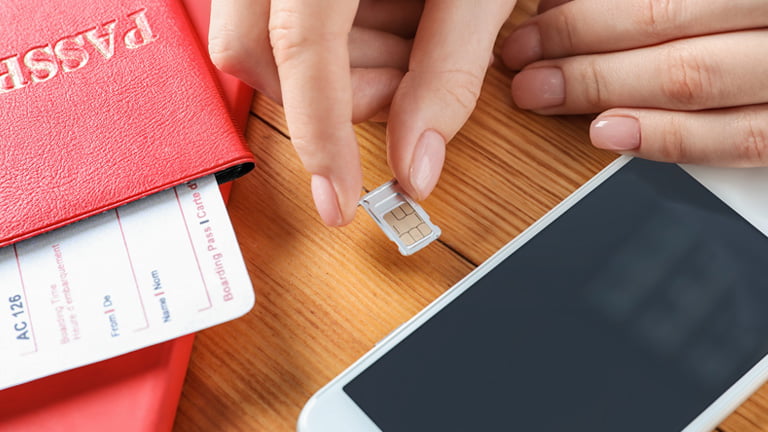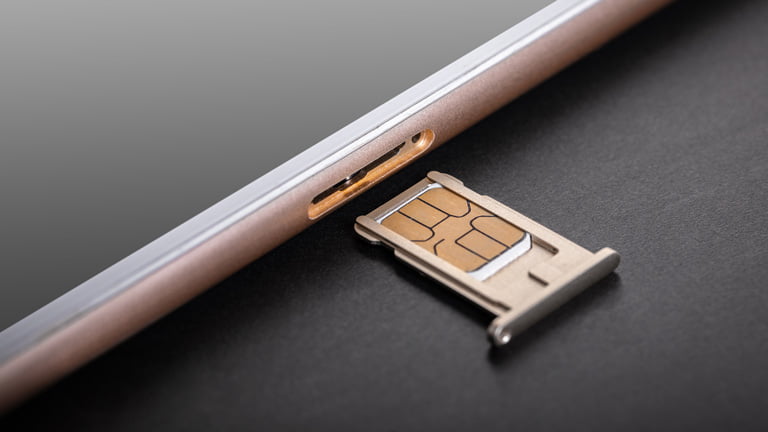
SIM cards, as known as Subscriber Identity Module, have become a ubiquitous part of modern smartphones, and chances are you’ve seen one before. It’s that tiny chip that you insert into your phone that allows you to connect to a cellular network and make phone calls, send texts, and browse the internet. But have you ever wondered what is stored on a SIM card? Many people are unsure, and it can be intimidating to take out or swap SIM cards. In this article, we will cover all the questions about what information is stored on a SIM card and more.
When do people get to see SIM cards?
SIM cards come with new phones when you purchase them from a carrier. You’ll also see SIM cards when you purchase a prepaid phone plan, or if you need to change carriers. Additionally, if your original SIM card is damaged or you’re traveling abroad and want to use data, you’ll need to get a new or secondary SIM card.
What information is stored on a SIM card?
SIM cards store a variety of information, including your phone number, contacts, and text messages. They also store data that identifies you to the network, such as your subscriber identity module card number, and the authentication key used to access the network. The exact data that is stored on a SIM card can vary depending on your carrier and phone model. Basically, SIM cards store the following information :
- Phone number
- Contacts
- Text messages (SMS and MMS)
- Authentication key (Ki)
- Advice of Charge (AoC)
- Mobile Country Code (MCC)
- Mobile Network Code (MNC)
- Mobile Subscriber Identification Number (MSIN)
- Mobile Station Integrated Services Digital Network (MSISDN)
- Local Area Identity (LAI)
- International Mobile Subscriber Identity (IMSI)
- Integrated Circuit Card Identifier (ICCID)
- Service Dialing Number (SDN)
- Service Provider Name (SPN)
- Short Message Service Center (SMSC)
- Value-Added Services (VAS)
- Personal Unblocking Key (PUK)
- Personal Identification Number (PIN)
In addition to the above information, according to Tech Radar, SIM cards can also store settings such as your voicemail number, network preference, and internet access point name (APN). Please also note that iPhones don’t store contacts, since it is stored in internal, external or cloud storage.
How much data can be stored in a SIM card?
The amount of data that can be stored on a SIM card varies depending on the size of the SIM card and the type of data being stored. Latest SIM cards can store up to 250 contacts and 500 text messages. They also have a storage capacity of up to 256KB for other data. But since this is not the major memory bank, it won’t hold your pictures or videos.
Can I check what is stored on a SIM card?
Yes, you can check what is stored on your SIM card. The process for doing so varies depending on your phone model and carrier. On an iPhone, you can view the information stored on your SIM card by going to [Settings] – [General] – [About]. Scroll down to the ICCID and you’ll see your SIM card number. Android phones have a similar process, but the location of the settings may vary depending on the manufacturer. On most Android devices, you can go to [Settings] – [About Phone] – [Status] – [SIM status] to see important information that is stored in your device.
Can my SIM card be hacked?
While it is technically possible for a SIM card to be hacked, it is highly unlikely. SIM cards use a secure authentication process that makes it difficult for someone to clone your SIM card or steal your data. However, it’s still important to keep your SIM card safe and secure to prevent any potential security breaches.
Is everything stored on the SIM card?
No, not everything is stored on a SIM card. While SIM cards store important information such as your phone number, information about cellular plan subscription, and even contacts and text messages. SIM cards differ from memory chips or major storages so that they do not store all of the data on your phone. Photos, videos, apps, and other media are typically stored on your phone’s internal storage or cloud storage or external SD card of your phone.

FAQ about SIM cards
Here are some common questions and answers about SIM cards:
Does a SIM card store data?
Yes, a SIM card stores crucial customer data such as your phone number and cellular plan subscription information, sometimes your contacts and text messages.
Does a SIM card hold my phone number?
Yes, your phone number is stored on your SIM card.
Does a SIM card hold contacts?
Yes, contacts can be stored on a SIM card. However, the amount of contacts that can be stored varies depending on the size of the SIM card. Also, it depends on the model of the device you have, since some models just store all contacts in internal storage. Usually, SIM cards these days can store up to 250 contacts.
Does a SIM card hold text messages?
Yes, text messages (SMS and MMS) can be stored on a SIM card. Similar to contacts, the amount of text messages that can be stored varies depending on the size of the SIM card and the phone model. Most SIM cards can store up to 500 text messages. In general, latest smartphone internal storage or cloud storage.
Does a SIM card hold apps?
No, apps are not stored on a SIM card. Apps are typically stored on your phone’s internal storage or cloud storage that you are using.
Does a SIM card hold pictures in my gallery?
No, pictures are not stored on a SIM card. Pictures are typically stored on your phone’s internal storage, cloud storage or an external SD card if your phone has one.
Will I lose my pictures if I take out a SIM card?
No, you will not lose your pictures if you take out your SIM card. As we’ve mentioned before, pictures are typically stored on internal, cloud, or external storage of your phone.
Alternative of a SIM card, eSIM
If you’re worried about taking out or swapping SIM cards, consider using an eSIM instead. eSIMs are embedded SIMs that are built into your phone, eliminating the need for a physical SIM card. This is especially useful for travelers who want to use data abroad without having to switch SIM cards.
eSIM USA offers a variety of eSIM plans that are convenient, affordable, and safe. By switching to eSIM, you can have peace of mind knowing that your data is secure and easily accessible, no matter where you are in the world.
It’s worth noting that while SIM cards have been the standard for many years, eSIMs are starting to become more popular. One of the main benefits of eSIMs is that they are built into the phone, meaning there is no physical card to worry about. Additionally, eSIMs can be downloaded and activated remotely, making them very convenient for users who frequently travel or switch carriers.
According to Apple, eSIMs offer several benefits over traditional SIM cards. For example, with an eSIM, you can have multiple phone numbers and data plans on the same device, making it easier to manage both personal and business use on one device. Additionally, eSIMs are more secure than traditional SIM cards, as they use a more advanced authentication process.
It’s also worth noting that eSIMs are becoming more widely supported by phone manufacturers and carriers. As of 2023, major phone manufacturers like Apple, Samsung, and Google all offer eSIM-compatible devices. And while not all devices support eSIMs yet, the list is growing.
If you’re interested in using an eSIM, it’s important to check with your carrier to see if they support the technology. You may also need to purchase an eSIM plan, which can be downloaded directly to your phone. Overall, eSIMs offer a convenient, secure, and future-proof alternative to traditional SIM cards, and they’re definitely worth considering if you’re in the market for a data plan for travel.
Final Thoughts
In conclusion, SIM cards store important information such as your phone number, subscription information, contacts, and text messages. They also store data that identifies you to the network, such as your subscriber identity module (SIM) card number and the authentication key used to access the network.
The amount of data that can be stored on a SIM card varies depending on the size of the SIM card and the type of data being stored. While it is technically possible for a SIM card to be hacked, it is highly unlikely.
However, if you are worried about taking out SIM cards, especially while traveling, you can have a think of using eSIM instead of SIM cards. Since eSIM can be easily purchased from trusted online providers like eSIM USA, you can buy and install cellular plans conveniently without physically exchanging SIM cards with eSIM.



